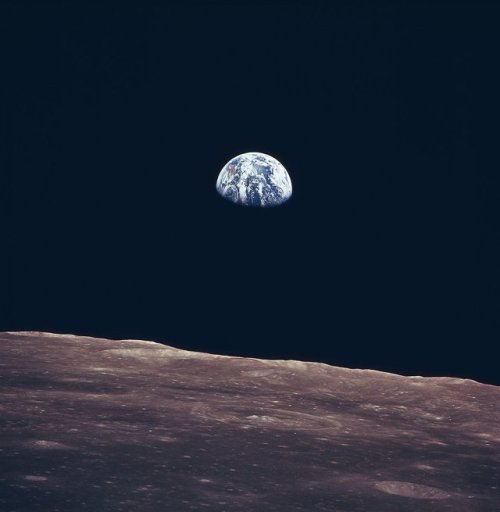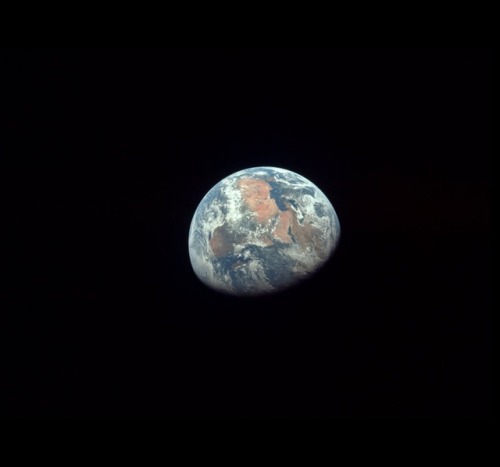Exploring An Asteroid Without Leaving Earth
Exploring an Asteroid Without Leaving Earth
This 45 day mission – which begins Feb. 1, 2018 – will help our researchers learn how isolation and close quarters affect individual and group behavior. This study at our Johnson Space Center prepares us for long duration space missions, like a trip to an asteroid or even to Mars.

The Human Research Exploration Analog (HERA) that the crew members will be living in is one compact, science-making house. But unlike in a normal house, these inhabitants won’t go outside for 45 days. Their communication with the rest of planet Earth will also be very limited, and they won’t have any access to internet. So no checking social media, kids!
The only people they will talk with regularly are mission control and each other.

The HERA XVI crew is made up of 2 men and 2 women, selected from the Johnson Space Center Test Subject Screening (TSS) pool. The crew member selection process is based on a number of criteria, including criteria similar to what is used for astronaut selection. The four would-be astronauts are:
Kent Kalogera
Jennifer Yen
Erin Hayward
Gregory Sachs
What will they be doing?
The crew are going on a simulated journey to an asteroid, a 715-day journey that we compress into 45 days. They will fly their simulated exploration vehicle around the asteroid once they arrive, conducting several site surveys before 2 of the crew members will participate in a series of virtual reality spacewalks.

They will also be participating in a suite of research investigations and will also engage in a wide range of operational and science activities, such as growing and analyzing plants and brine shrimp, maintaining and “operating” an important life support system, exercising on a stationary bicycle or using free weights, and sharpening their skills with a robotic arm simulation.

During the whole mission, they will consume food produced by the Johnson Space Center Food Lab – the same food that the astronauts enjoy on the International Space Station – which means that it needs to be rehydrated or warmed in a warming oven.
This simulation means that even when communicating with mission control, there will be a delay on all communications ranging from 1 to 5 minutes each way.
A few other details:
The crew follows a timeline that is similar to one used for the space station crew.
They work 16 hours a day, Monday through Friday. This includes time for daily planning, conferences, meals and exercise.
Mission: February 1, 2018 - March 19, 2018

But beware! While we do all we can to avoid crises during missions, crews need to be able to respond in the event of an emergency. The HERA crew will conduct a couple of emergency scenario simulations, including one that will require them to respond to a decrease in cabin pressure, potentially finding and repairing a leak in their spacecraft.
Throughout the mission, researchers will gather information about living in confinement, teamwork, team cohesion, mood, performance and overall well-being. The crew members will be tracked by numerous devices that each capture different types of data.
Learn more about the HERA mission HERE.
Explore the HERA habitat via 360-degree videos HERE.
Make sure to follow us on Tumblr for your regular dose of space: http://nasa.tumblr.com
More Posts from Stars-and-shitt-blog and Others
me every morning: the search for sock

Wide Field M42 Orion - For more images of the cosmos Click Here
Because telescopes work using mirrors, we’ll never know if there are any space vampires.
When you wanna look at the stars but British weather says no
I just wish the clouds would go away for like-say 5,000 years?







Happy Earth day! (Let’s take care of our planet while there’s time)
Image credit: NASA, Mission Apollo, STS-103, Lunar module & Cassini
Do you think it’s possible that Pluto is an escaped moon of Neptune, and if not, why not? The opinions I can find on the matter leave me a bit confused.
Well, first of all I’m not an expert and my explanation may be wrong. I’ve heard of it, but it seems that hypothesis is not very likely. If pluto has orbited Neptune before, it would have to have a phenomenon with an extremely large energy so that Pluto would leave the Neptunian orbit and manage to escape.
Although at some point the orbits of Pluto and Neptune “ get close ”, it is still far enough away that they do not interact, and Pluto has an inclined orbit compared to Neptune. These factors make it even more difficult.

Lunar eclipse from Victoria, Australia Found here
What’s Up - February 2018
What’s Up For February?

This month, in honor of Valentine’s Day, we’ll focus on celestial star pairs and constellation couples.

Let’s look at some celestial pairs!

The constellations Perseus and Andromeda are easy to see high overhead this month.

According to lore, the warrior Perseus spotted a beautiful woman–Andromeda–chained to a seaside rock. After battling a sea serpent, he rescued her.

As a reward, her parents Cepheus and Cassiopeia allowed Perseus to marry Andromeda.

The great hunter Orion fell in love with seven sisters, the Pleiades, and pursued them for a long time. Eventually Zeus turned both Orion and the Pleiades into stars.

Orion is easy to find. Draw an imaginary line through his belt stars to the Pleiades, and watch him chase them across the sky forever.

A pair of star clusters is visible on February nights. The Perseus Double Cluster is high in the sky near Andromeda’s parents Cepheus and Cassiopeia.

Through binoculars you can see dozens of stars in each cluster. Actually, there are more than 300 blue-white supergiant stars in each of the clusters.

There are some colorful star pairs, some visible just by looking up and some requiring a telescope. Gemini’s twins, the brothers Pollux and Castor, are easy to see without aid.

Orion’s westernmost, or right, knee, Rigel, has a faint companion. The companion, Rigel B, is 500 times fainter than the super-giant Rigel and is visible only with a telescope.

Orion’s westernmost belt star, Mintaka, has a pretty companion. You’ll need a telescope.

Finally, the moon pairs up with the Pleiades on the 22nd and with Pollux and Castor on the 26th.
Watch the full What’s Up for February Video:
There are so many sights to see in the sky. To stay informed, subscribe to our What’s Up video series on Facebook.
Make sure to follow us on Tumblr for your regular dose of space: http://nasa.tumblr.com.
Star Trek and Star Wars are both about blonde farm boys going to space for the drama of it all
-
 alienlamp liked this · 3 years ago
alienlamp liked this · 3 years ago -
 nasaadi3 reblogged this · 4 years ago
nasaadi3 reblogged this · 4 years ago -
 nasaadi3 liked this · 4 years ago
nasaadi3 liked this · 4 years ago
I enjoy telescopes too much for my own good. (PS. my header is fireworks because nothing else fits yet)
38 posts